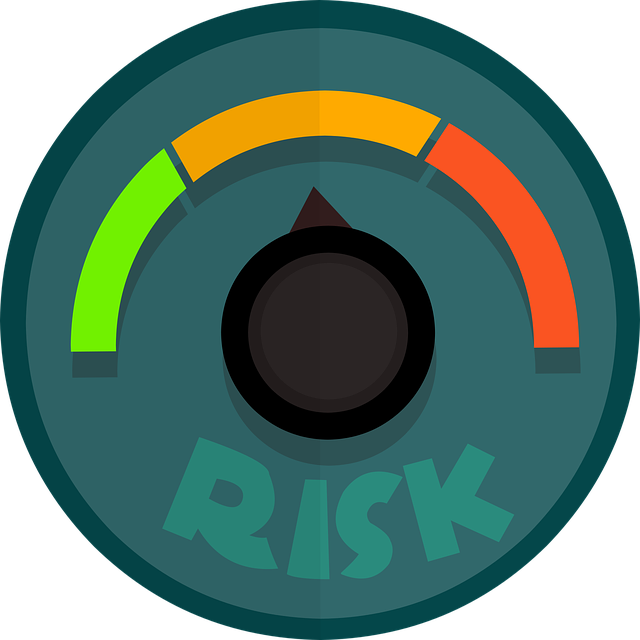What Risks Should I Be Guarding Against in Business?
As you go about your life or business, taking on new challenges and embarking on new adventures, it’s important to be aware of the risks that come with them. By understanding what risks you might face, you can put in place a risk management process to help protect yourself from potential harm.
A risk assessment is an important part of this process. By evaluating the possible dangers associated with a particular situation or activity, you can develop mitigation plans to reduce or eliminate those risks. And by being proactive about risk management, you can enjoy life to the fullest without worrying about what might happen.
The survey conducted among risk management experts identified cyber incidents as the number one risk to businesses worldwide in 2022. Not only are cyber-attacks risky, but other potential risks should be taken into consideration, like data loss, natural disasters, failure of the supply chain or business disruption.
Keep reading to discover what other risks you should guard against as a business owner or an individual.
Types of Business Risks and Ways to Manage Them

Managing risk is one of the most important responsibilities of a business owner. You need to be prepared to face various risks, understand how they can affect your business and know how to protect yourself from them.
Since a business can face numerous risks, risk identification and risk assessment should be part of an organization’s risk management responsibilities.
In order to manage risk, you’ll want to first break down your business into different areas of risk. What comes to mind when risk is mentioned? Focusing risk management on a single element or risk type can open you to other types of risks. Questions to help identify areas of risk:
Are there recent changes in laws or regulations which may impact your business operation?
Do you have a sound control system, including risk management activities?
Do you have adequate financial resources to handle risk?
What if your biggest customer stopped buying from you?
Do your employees have the necessary skills to complete their tasks in a risk-free manner?
Have you taken steps to protect your company’s data and intellectual property?
Identifying risk should include all areas of the business, and risk should be evaluated from these perspectives—financial, operational, compliance, reputational and cybersecurity risks.
Financial Risk

If a company wants to stay beneficial and not be penalized, they must manage their cash flow to meet interest on loans and other timely debt-related payments. Financial risk encompasses the way money moves in business, as well as the likelihood of an abrupt financial loss.
If a company doesn’t have ample liquidity to take care of its debt installments, it might fall behind on payments, putting itself at financial risk.
Businesses with a lot of debt are more likely to fail and become insolvent, so lenders see them as being at higher risk.
Here are the types of financial risks to consider:
Liquidity risk: A company’s liquidity risk is the risk of not being able to pay its debts when they come due because it doesn’t have enough liquid assets. Liquid assets are ones that can be easily converted into cash.
Credit risk: If a company gives out loans to clients and they default on their payments, not only does this lower the company’s revenue, but it also puts them at risk of going into default if they can’t repay the business credit extended to them.
Currency risk: Doing business in different countries brings with it the risk of exchange rate fluctuations. This risk is referred to as currency risk, which can significantly affect a company’s profits if the currency rate changes drastically. For instance, if a company sells products in different countries and their currency rate drops, the value of their products may also decrease.
Manage Financial Risk by staying aware of your expenses and income, making an effort to save money whenever possible to keep a good cash flow. Also, ask about loans with the lowest interest rates available and regularly check for changes in foreign currency rates. Make debt payments on time without fail.
Pro Tip: If a company’s revenue primarily comes from one or only a few clients, it is at significant financial risk if its customers stop using its services. Therefore, businesses should try to have a diverse customer base so that the loss of any single client would not be ruinous.
Compliance Risk
A company that violates government laws or regulatory standards may be subject to compliance risk. For example, it could be at risk if a business fails to follow environmental regulations and meet certain pollution or hazardous waste standards.
In some industries, such as financial services, there are laws in place to protect consumers. This means that both small and large banks must comply with a variety of lending and financial disclosure regulations.
Breaking contracts with suppliers or other partners can also expose a company to legal risks, which could result in lawsuits.
In addition to government laws and regulations, companies may also be subject to industry standards. These can range from safety protocols in the workplace to data security measures.
Companies that go against the law are fined, and their executives may be sent to prison. Furthermore, these companies often suffer from a damaged reputation with their customers and others who are invested in the company.
Manage Compliance Risk by creating a successful risk management program that requires risk assessments. Companies must identify, evaluate and prioritize risks related to compliance with laws, regulations and industry standards.
After risk assessments, organizations should plan risk treatments to reduce the likelihood of compliance risk. This can include implementing risk control measures, hiring legal experts and engaging external risk management professionals to provide risk advice.
Technology should also be used wherever possible. For example, companies can install risk management software to help detect and monitor risks in real-time. This allows organizations to be more agile and make decisions quickly to reduce risk.
Operational Risk
Let’s explain this risk with an example. Suppose a company has invested in a new HR system, but the new system could be more effective and efficient. This can lead to operational risk for the business, which could mean extra costs and lower productivity.
Operational risk is the risk that arises from any internal processes, people and systems that a business uses to deliver its services or products. This type of risk can be caused by a variety of factors, such as inadequate training, inadequate software systems, personnel errors and management mistakes.
Disasters like hurricanes, fires and pandemics can destroy a business if they disrupt daily operations. According to the U.S. Census Bureau’s Small Business Pulse Survey, a majority of respondents said that the 2020 pandemic had dealt their business moderate or extensive damage.
Managing Operational Risk begins with making employee training a priority to avoid in-house mistakes. Also, prepare for external circumstances that could disrupt company operations by having a solid plan in place, such as partnering with another business nearby if a natural disaster hits yours. This way, you can still sell items from their kitchen instead of your own.
Reputational Risk
As the name implies, reputational risk is the risk of damage to a company’s reputation. For example, if an enterprise fails to deliver on its promises or offers poor customer service, it can cause harm to its reputation. Additionally, lawsuits against a company, negative press, internet trolls and social media mentions can all cause reputational damage.
This type of risk is difficult to measure and can have long-term consequences for a business, such as a decrease in sales and employee morale.
Manage Reputational Risk by making an effort to listen to customer and employee feedback, online and offline. Aim not only to supply a high-quality product or service but also to ensure that workers are properly trained in excellent customer service skills and how to handle complaints professionally, issue refunds when needed and apologize graciously.
At the same time, enterprise risk management (ERM) experts recommend that companies have a crisis management plan in place which is based on traditional risk management principles.
This plan should include a strategy for dealing with negative press, as well as an integrated approach to mitigating reputational risk that considers all stakeholders.
Additionally, having a risk management consultant on board can help organizations identify and address potential reputational risks before they materialize.
Cybersecurity Risk

Companies are now turning to online and mobile channels for sales and e-commerce payments, as well as data collection and storage. While this creates greater opportunities for businesses, it also leaves room for hacking—posing a security risk to the company, its employees, shareholders and customers.
People expect companies to protect their private information, but regardless of continued safety efforts, there have been reports of data breaches, identity theft and payment fraud within various organizations. The organization’s security controls must be up to date and appropriate for the risk.
These security breaches (technology risks) can damage a company’s reputation and open the door to financial liability.
Manage Cybersecurity Risk by assessing the company’s cyber risk and develop a comprehensive security risk management program to protect the organization from potential threats.
This will include investing in the right fraud detection tools and software (anti-virus, anti-spam, encryption, etc.), and training employees to protect their accounts and data. Some simple tips to follow are avoiding random links in emails and only sharing encrypted personal information, as well as carrying out regular reviews and audits of the company’s security controls.
Approaches for Assessing Risk
Here are several approaches to use in accessing risks in your business.
Use Pessimistic Approach
Being a card-carrying pessimist may not make you the best business person, but it will help you to assess risks better. When estimating potential hazards, refrain from being too confident and thinking that an event “can’t” or “won’t” happen. Be ready for all possibilities by examining every one of your presumptions about possible risks—no matter how unlikely they seem.
Get Help from An Expert
If you’re unsure how to assess risk, don’t be afraid to get assistance from an expert. External risk consultants can advise on risk management frameworks and risk assessment processes. It’s important to remember risk management is an ongoing process and should be monitored regularly to make sure that risk levels are within acceptable levels.
Conduct Internal and External Research
Internal research conducted by managing your own claims and losses or by delegating the task to experienced employees will help you identify risks within different areas of the company. With some keen observation skills, you may be able to pinpoint where things aren’t running as smoothly as intended. For example, high costs associated with one department suggest an unmanaged risk.
And based on your risk management strategy, external risk research should be conducted to identify risks associated with factors outside the business. Researching industry trends, economic news and new regulations or technological developments can help you anticipate risk and prepare for potential challenges.
Analyze Customer Complaints Regularly
Companies with physical locations can benefit most from this strategy, but even e-commerce businesses may receive helpful customer feedback that could improve their reputation. Carefully analyze customer feedback to identify risk indicators.
Use Software
If risk assessment takes too much time and resources, then risk management software can help streamline the risk identification process. The software helps to identify, manage and report risk in a structured manner. The system is automated to assist risk analysis and risk monitoring processes, which can help prevent losses.
By assessing internal and external risks, utilizing risk management software, and regularly analyzing customer feedback, you can identify and address risks that could potentially harm your business. Taking the time to evaluate potential risks will help you protect your organization and ensure its long-term success.
FAQs
The most common risk faced by businesses is related to financial loss. This can include but is not limited to insolvency, currency risk, credit risk and operational risk. Other common risk factors include legal, reputational, strategic and compliance risks.
Risk management responsibilities typically include risk identification, risk assessment, control, financing, and communication. Risk managers are responsible for assessing risk levels, developing risk management strategies, implementing risk controls and overseeing risk-related activities.
The risks you should guard against depend on your company and its operations. There is no one-size-fits-all approach when it comes to risk management. Your risk strategy should be tailored to your specific industry, business operations and goals.


